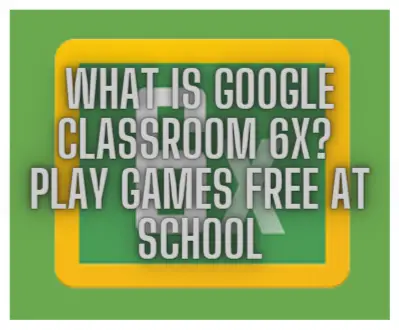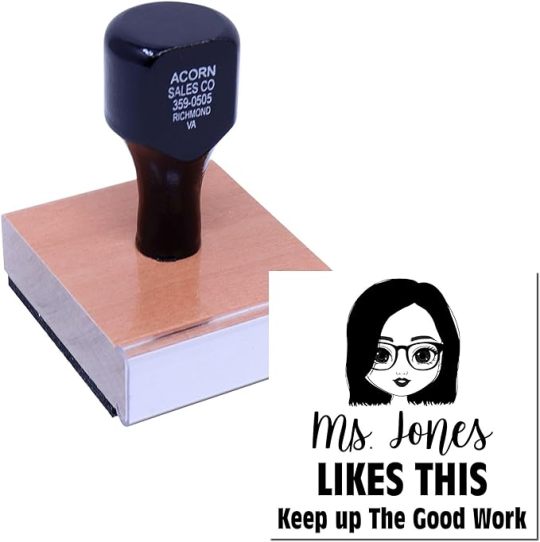#Classroominnovation
Text
Interactive Learning: Canva Templates for Engaging Lesson Plans

In the digital age, fostering engagement and interactivity in the classroom has become paramount for effective teaching and learning. As educators strive to create dynamic lesson plans that captivate students' attention and facilitate deeper understanding, the role of interactive learning materials has gained prominence. In this blog post, we delve into the significance of interactive learning and the transformative potential of engaging lesson plans. Specifically, we'll explore how Canva, a versatile design platform, offers a myriad of templates to facilitate the creation of interactive lesson materials. Join us as we uncover the innovative ways in which Canva templates can elevate the learning experience and revolutionize lesson planning for educators worldwide.
Understanding Interactive Learning: Engaging Students in the Digital Age
Interactive learning goes beyond traditional lectures and textbooks, offering students active participation and hands-on experiences that enhance comprehension and retention. It involves the integration of multimedia elements, interactive activities, and collaborative tasks to foster deeper engagement and facilitate personalized learning experiences.
By incorporating interactive elements into lesson plans, educators can cater to diverse learning styles and provide students with opportunities for exploration, experimentation, and reflection. This dynamic approach to teaching encourages active involvement, critical thinking, and problem-solving skills, laying the foundation for lifelong learning and academic success.
In today's digital age, where technology is ubiquitous and attention spans are fleeting, interactive learning offers a refreshing alternative to passive instruction. By harnessing the power of multimedia resources, such as videos, animations, and interactive simulations, educators can create immersive learning environments that captivate students' interest and stimulate their curiosity.
Furthermore, interactive learning promotes collaboration and communication skills, as students engage in group activities, discussions, and peer-to-peer feedback. By fostering a sense of community and cooperation in the classroom, educators can cultivate a supportive learning environment where students feel valued, empowered, and motivated to excel.
In summary, interactive learning holds immense potential for transforming education and empowering students to become active participants in their own learning journey. By embracing innovative approaches to lesson planning and leveraging technology-enhanced tools like Canva templates, educators can unlock new possibilities for engaging students and igniting their passion for learning.

Introducing Canva Templates: Revolutionizing Lesson Planning with Creativity
Canva has emerged as a go-to platform for educators seeking to infuse creativity and innovation into their lesson planning process. With its intuitive interface and vast library of templates, Canva offers educators a wealth of resources to design visually stunning and interactive lesson materials.
As one of the most popular graphic design platforms available today, Canva provides users with a user-friendly interface and a diverse range of tools and features to unleash their creativity. From customizable templates to a rich selection of fonts, graphics, and multimedia elements, Canva empowers educators to design captivating visual content with ease.
Within Canva's extensive library of templates, educators will find a dedicated section curated specifically for educational purposes. This collection includes a variety of templates tailored to different subjects, grade levels, and learning objectives. Whether you're creating a lesson plan, presentation, infographic, or interactive worksheet, Canva offers templates designed to streamline the design process and elevate the quality of your educational materials.
Some of the types of templates available for creating interactive lesson plans include:
- Interactive Infographics: Engage students with visually appealing infographics that feature interactive elements such as clickable buttons, hover effects, and animated graphics.
- Interactive Presentations: Create dynamic presentations that allow students to interact with content through embedded multimedia, interactive slides, and clickable links.
- Interactive Worksheets: Reinforce learning concepts with interactive worksheets that feature drag-and-drop activities, fillable text fields, and interactive quizzes.
- Interactive Games and Activities: Gamify the learning experience with interactive games and activities that challenge students to apply their knowledge in a fun and engaging way.
With Canva templates, educators can unleash their creativity and design interactive lesson materials that inspire curiosity, foster engagement, and enhance learning outcomes. Whether you're a seasoned educator or just getting started with lesson planning, Canva provides the tools and resources you need to bring your lessons to life in the digital age.

Introducing Canva Templates: Unlocking Creativity in Education
Canva stands as a beacon of creativity in the realm of graphic design, offering a myriad of intuitive tools and resources for users worldwide. With its user-friendly interface and extensive library of templates, Canva has become a go-to platform for educators seeking to infuse their lesson plans with visual appeal and interactivity.
Educators can access Canva's dedicated library of templates curated specifically for educational purposes. From lesson plans and worksheets to presentations and infographics, Canva offers a diverse array of templates designed to streamline the content creation process and enhance the learning experience.
Within Canva's expansive library, educators can find templates tailored to various subjects, grade levels, and instructional formats. Whether teaching math, science, language arts, or social studies, Canva provides educators with the tools they need to create engaging and visually compelling lesson materials.
Furthermore, Canva's templates are fully customizable, allowing educators to tailor lesson plans to their unique teaching style, curriculum objectives, and students' needs. With the ability to add text, images, graphics, and interactive elements, educators can personalize their lesson materials to create a dynamic and immersive learning experience.
In summary, Canva templates offer educators a powerful platform for unleashing their creativity and designing captivating lesson plans that resonate with students. With accessibility, customization, and visual appeal at its core, Canva empowers educators to transform their teaching materials and elevate the learning experience for students of all ages and abilities.
Exploring Canva Templates for Interactive Lesson Plans: Bringing Lessons to Life
In this section, we delve into the diverse array of Canva templates tailored for creating interactive lesson plans across various subjects and grade levels. Let's explore how these templates can breathe life into classroom instruction and engage students in meaningful learning experiences.
- Subject-Specific Templates: Showcase a selection of Canva templates designed for different subjects, including math, science, language arts, social studies, and more. Each template is thoughtfully crafted to align with specific curriculum standards and learning objectives, making it easy for educators to integrate them into their lesson plans.
- Interactive Elements: Highlight the interactive features available within Canva templates, such as:
- Quizzes and Assessments: Showcase templates that include interactive quiz elements, allowing educators to create formative assessments and gauge student understanding.
- Drag-and-Drop Activities: Demonstrate templates with drag-and-drop activities, where students can manipulate objects on the screen to reinforce concepts or solve problems.
- Multimedia Integration: Explore templates that seamlessly integrate multimedia content, such as videos, audio clips, and animations, to enhance engagement and provide additional context to lesson materials.
- Grade-Level Adaptability: Discuss how Canva templates cater to different grade levels, from elementary to high school, by offering age-appropriate content and interactive features. Educators can easily adapt these templates to suit the needs and abilities of their students, ensuring inclusivity and accessibility in the classroom.
- Real-Life Examples: Provide real-life examples of educators who have successfully used Canva templates to create interactive lesson plans. Share their experiences, insights, and student feedback to illustrate the impact of interactive learning materials on student engagement and academic achievement.
By exploring Canva templates for interactive lesson plans, educators can tap into a wealth of resources that enhance instruction, foster collaboration, and inspire creativity in the classroom. With customizable features and interactive elements, Canva empowers educators to design dynamic learning experiences that resonate with students and cultivate a lifelong love of learning.
Step-by-Step Guide to Using Canva Templates: Transforming Ideas into Engaging Lessons
In this section, we provide educators with a practical guide on how to harness the power of Canva templates to create interactive and visually captivating lesson plans. Follow these step-by-step instructions to unleash your creativity and elevate your teaching materials:
- Access Canva's Education Category:
- Open the Canva website or app and navigate to the "Education" category. This section is specifically curated for educators and contains a wide range of templates tailored for teaching and learning purposes.
- Browse and Select Templates:
- Browse through the diverse collection of templates available within the Education category. From lesson plans and worksheets to presentations and infographics, explore the templates that best suit your instructional needs and objectives.
- Customize Your Template:
- Once you've selected a template, it's time to personalize it to align with your lesson content and teaching style. Add text, images, and interactive elements to make the lesson plan engaging and interactive. Canva's intuitive drag-and-drop interface makes customization a breeze, allowing you to rearrange elements and adjust formatting with ease.
- Incorporate Interactive Elements:
- Enhance your lesson plan by incorporating interactive elements such as quizzes, drag-and-drop activities, and multimedia content. These interactive features not only captivate students' interest but also reinforce learning objectives and promote active engagement in the classroom.
- Review and Finalize:
- Once you've customized your template and added interactive elements, take a moment to review your lesson plan to ensure accuracy and coherence. Make any necessary adjustments or refinements before proceeding to the next step.
- Save and Download:
- When you're satisfied with your lesson plan, save your work and download the completed document in your preferred format (e.g., PDF, PNG, JPEG). You can then print the lesson plan or share it digitally with your students, colleagues, or administrators.
By following these simple steps, educators can harness the power of Canva templates to create dynamic and interactive lesson plans that inspire curiosity, foster engagement, and facilitate meaningful learning experiences in the classroom.
Tips for Maximizing the Use of Canva Templates: Elevating Your Lesson Planning Workflow
In this section, we offer practical tips and strategies for educators to make the most of Canva templates and maximize their impact on student engagement and learning outcomes:
- Incorporate Canva Templates into Your Workflow:
- Integrate Canva templates into your lesson planning process as a versatile tool for creating engaging and visually appealing materials. Allocate dedicated time in your schedule to explore Canva's library of templates and experiment with different designs and layouts.
- Personalize Templates to Suit Your Teaching Style:
- Customize Canva templates to reflect your unique teaching style, content preferences, and instructional goals. Add your own branding elements, such as school logos or color schemes, to create a cohesive look and feel across all your lesson materials.
- Utilize Interactive Features Strategically:
- Leverage Canva's interactive features, such as quizzes, polls, and clickable buttons, to promote active participation and foster deeper engagement among students. Incorporate interactive elements at key points in your lesson to encourage interaction and reinforce learning objectives.
- Encourage Collaboration and Peer Feedback:
- Use Canva templates to facilitate collaborative learning experiences by assigning group projects or peer review activities. Encourage students to work together to customize templates, share ideas, and provide constructive feedback to their peers.
- Provide Clear Instructions and Guidance:
- When using Canva templates with interactive elements, ensure that students understand how to navigate and interact with the content effectively. Provide clear instructions and guidance on how to complete activities, answer quiz questions, or submit responses.
- Promote Reflection and Self-Assessment:
- Incorporate reflective prompts or self-assessment activities into Canva templates to encourage students to think critically about their learning process and progress. Use interactive features such as reflection journals or self-evaluation checklists to promote metacognitive skills and self-awareness.
- Stay Updated on New Features and Updates:
- Keep abreast of new features and updates released by Canva to enhance your lesson planning toolkit. Explore new templates, design elements, and interactive functionalities to continually innovate and refine your teaching practices.
By following these tips and leveraging the full potential of Canva templates, educators can create dynamic, interactive, and engaging lesson materials that inspire curiosity, foster collaboration, and empower students to achieve academic success.
Real-Life Examples and Success Stories: Inspiring Educators, Empowered Students
In this section, we highlight real-life examples of educators who have embraced Canva templates to create engaging and interactive lesson plans, fostering a dynamic learning environment that resonates with students. These success stories serve as inspiration and exemplify the transformative impact of interactive learning materials in the classroom:
- Educator Spotlight: Mrs. Rodriguez's Interactive Science Lessons:
- Mrs. Rodriguez, a middle school science teacher, uses Canva templates to design interactive lesson materials that bring abstract scientific concepts to life. By incorporating interactive elements such as virtual labs, drag-and-drop activities, and multimedia resources, Mrs. Rodriguez has seen a significant increase in student engagement and understanding of complex scientific principles.
- Student Voices: Feedback from Ms. Chen's English Class:
- In Ms. Chen's high school English class, students have embraced Canva templates as a platform for creative expression and collaborative learning. Through interactive storytelling projects and multimedia presentations, students have the opportunity to showcase their literary analysis skills while honing their digital literacy and communication abilities.
- Success Story: Mr. Johnson's History Quizzes:
- Mr. Johnson, a history teacher, incorporates Canva's quiz templates into his lesson plans to assess student knowledge and promote active learning. By creating interactive quizzes with embedded multimedia content and instant feedback features, Mr. Johnson has observed higher levels of student engagement and retention of historical facts and events.
These real-life examples underscore the transformative potential of Canva templates in empowering educators to design dynamic and interactive learning experiences that cater to diverse learning styles and foster deeper engagement and understanding among students. As educators continue to innovate and explore new possibilities with Canva, the impact on student learning and achievement is bound to grow exponentially, shaping the future of education for generations to come.
FAQs
What is Canva?
Canva is a popular online graphic design platform that offers a wide range of templates, design tools, and resources for creating various visual content, including presentations, posters, social media graphics, and more.
Are Canva templates suitable for educational use?
Yes, Canva offers a dedicated Education category with templates specifically designed for educators.
Read the full article
#Canvatemplates#Classroominnovation#Educationtechnology#Interactivelearning#Lessonplanning#Multimedialearning#Studentengagement
0 notes
Text
Unlocking the Potential of Google Classroom 6x

Introduction to Google Classroom 6x
In the ever-evolving landscape of digital education, Google Classroom stands as a beacon of innovation and efficiency. With the release of Google Classroom 6x, educators and learners alike are presented with a plethora of new features and enhancements designed to streamline the teaching and learning experience.
Benefits of Google Classroom 6x
Google Classroom 6x brings forth a myriad of benefits, catering to the diverse needs of educators and students. From improved collaboration to seamless integration with other Google services, the benefits are manifold.
Key Features of Google Classroom 6x
Simplified Interface
The latest iteration of Google Classroom boasts a user-friendly interface, making navigation and management a breeze for both educators and students. The intuitive layout ensures that users can focus on teaching and learning without being bogged down by complex functionalities.
Enhanced Collaboration Tools
Google Classroom 6x enhances collaboration among students and educators with features like real-time editing, commenting, and peer review. These tools foster a collaborative learning environment where ideas can be shared and refined effortlessly.
Advanced Grading Options
With Google Classroom 6x, grading becomes more efficient and personalized. Educators can create custom rubrics, provide actionable feedback, and track student progress with ease. The advanced grading options empower educators to assess student performance comprehensively.
How to Get Started with Google Classroom 6x
Getting started with Google Classroom 6x is a straightforward process that involves a few simple steps.
Creating a Classroom
To create a classroom, educators simply need to navigate to the Google Classroom website, click on the "+" icon, and follow the prompts to set up their class.
Adding Students and Teachers
Once the classroom is created, educators can invite students and co-teachers by sharing a unique class code or email invitation. This allows for seamless collaboration and communication within the classroom environment.
Assigning Work and Assessments
Educators can assign work and assessments to students directly from the Google Classroom interface. They can create assignments, quizzes, and discussions, set due dates, and track student submissions effortlessly.
Tips for Maximizing Productivity with Google Classroom 6x
To maximize productivity with Google Classroom 6x, educators can employ a few strategic tips and tricks.
Utilizing Integration with Google Drive and other G Suite Apps
Google Classroom seamlessly integrates with Google Drive and other G Suite apps, allowing educators to leverage the full potential of these tools. By integrating with Google Drive, educators can easily share resources, collaborate on documents, and provide feedback in real-time.
Setting Up Automated Notifications
To stay organized and informed, educators can set up automated notifications within Google Classroom. By customizing notification settings, educators can receive updates on assignments, announcements, and student activity, ensuring that nothing falls through the cracks.
Leveraging Google Meet for Virtual Classes
In the era of remote learning, Google Meet serves as a valuable tool for hosting virtual classes and meetings. Educators can seamlessly integrate Google Meet with Google Classroom, allowing for synchronous instruction and interactive sessions with students.
Real-life Examples of Successful Implementation
Numerous educational institutions and educators have successfully implemented Google Classroom 6x to enhance teaching and learning outcomes. From K-12 classrooms to higher education institutions, Google Classroom 6x has garnered praise for its ease of use and effectiveness.
Challenges and Solutions with Google Classroom 6x
While Google Classroom 6x offers numerous benefits, it is not without its challenges. Common issues such as technical glitches, connectivity issues, and learning curve may arise. However, with proper training and support, educators can overcome these challenges and harness the full potential of Google Classroom 6x.
Comparison with Previous Versions of Google Classroom
Google Classroom 6x represents a significant evolution from its predecessors, introducing a host of new features and improvements. A comparison with previous versions highlights the advancements in user interface, collaboration tools, and grading options, underscoring the benefits of upgrading to Google Classroom 6x.
Future Prospects and Updates
As technology continues to evolve, Google Classroom will likely undergo further updates and enhancements. Educators can look forward to future updates that address emerging needs and challenges in the realm of digital education, further solidifying Google Classroom's position as a leading learning management system.
Conclusion
In conclusion, Google Classroom 6x revolutionizes the teaching and learning experience with its intuitive interface, advanced collaboration tools, and seamless integration with other Google services. By embracing Google Classroom 6x, educators can unlock new possibilities for engaging, personalized, and effective instruction.
0 notes
Text
📚📝 The Central Board of Secondary Education (CBSE) is mulling a significant shift in its examination system, considering Open Book Examinations (OBE) for students from Classes 9 to 12. This consideration aligns with the recommendations of the new National Curriculum Framework introduced last year.
🔍🧾 Pilot Run Update:
The CBSE is planning a pilot run of open-book assessments in selected schools, targeting subjects —English, Mathematics, and Science for Classes 9 and 10, and English, Mathematics, and Biology for Classes 11 and 12. The aim is to gauge the time taken by students to complete these tests and gather feedback from stakeholders. 📊👩🎓👨🎓
🎓💡 Follow us at The Master Class for the latest education News & Tips!
#TheMasterClass#ExamReform#CBSE#OpenBookExams#EducationReform#StudentEvaluation#SecondaryEducation#OBE#ExamPreparation#ClassroomInnovation
0 notes
Text
Personalized Selfie Encouragement Rubber Stamp
Empower your students with personalized encouragement! 🌟 Introducing the Personalized Selfie Encouragement Rubber Stamp. With your custom Bitmoji avatar, inspire your class like never before. Perfect for gifted program teachers and as a unique classroom reward. Motivate with every stamp!

#SelfieEncouragement#CustomBitmojiStamp#TeacherMotivation#StudentEmpowerment#ClassroomInnovation#GiftedPrograms#TeacherTools#MotivateWithStamp#ClassroomRewards#PersonalizedLearning
0 notes
Text
Implementing AI Education In Classrooms
Implementing AI education in classrooms can be beneficial in preparing students for the future of work and technology. Here are some steps that educators can take to introduce AI education in their classrooms:

Understand AI: Educators need to have a basic understanding of AI and its applications in different fields. They can use resources such as online courses, and books, or attend AI workshops to build their knowledge on the topic.
Develop a curriculum: AI education can be integrated into various subjects such as computer science, mathematics, social studies, and more. Educators can create a curriculum that includes AI topics, such as machine learning, natural language processing, and robotics.
Use hands-on activities: Practical activities and projects can help students develop a better understanding of AI concepts. Educators can incorporate activities such as programming chatbots, building robots, or creating algorithms that help students apply AI concepts in a fun and engaging way.
Encourage critical thinking: AI education should encourage students to think critically about the social and ethical implications of AI. Educators can introduce discussions on the impact of AI on society and how to ensure that AI is used ethically and responsibly.
Partner with industry professionals: Partnering with industry professionals can help educators gain insights into the latest AI trends and provide students with opportunities to engage with AI professionals. This can also help students understand the practical applications of AI in different fields.
Use AI tools: AI tools such as chatbots, virtual assistants, and machine learning platforms can help students learn and explore AI concepts in an interactive and engaging way.
By implementing AI education in classrooms, educators can help prepare students for the future job market and equip them with the necessary skills to work with AI technology.
#AIeducation#STEMeducation#FutureofEducation#21stCenturySkills#ClassroomInnovation#ExperientialLearning#StudentEngagement
0 notes
Text
Virtual Field Trips: Using VR to take Students on Educational Adventures
Virtual field trips (VFTs) are becoming increasingly popular as a way to take students on educational adventures without leaving the classroom. Using virtual reality (VR) technology, VFTs allow students to experience places and events that may be too difficult or expensive to access in real life, such as historical landmarks, scientific phenomena, or even outer space.

Some benefits of VFTs include:
1. Access to remote locations: With VFTs, students can virtually travel to places that may be difficult or impossible to reach in person, such as the depths of the ocean, the surface of Mars, or the inside of a human cell.
2. Cost-effective: VFTs can be more cost-effective than traditional field trips, as they eliminate the need for transportation, admission fees, and other associated costs.
3. Increased engagement: VFTs can be more engaging and immersive than traditional classroom learning, as students can actively explore and interact with the virtual environment.
4. Customizable and flexible: VFTs can be customized to meet the needs of individual students or classes, and can be accessed at any time, allowing for greater flexibility in scheduling.
Some examples of VFTs include:
1. Google Expeditions: A free app that allows teachers to lead students on virtual tours of over 1000 locations, including landmarks, museums, and historical sites.
2. Nearpod VR: An interactive platform that allows teachers to create custom virtual field trips that integrate with their lesson plans.
3. Minecraft: Education Edition: A game-based learning platform that includes educational content and virtual field trips that can be accessed by students.
4. National Geographic Explore VR: A virtual reality app that allows students to explore the world and its wildlife in 360-degree immersive experiences.
Overall, virtual field trips offer a unique and engaging way to enhance student learning and provide access to new and exciting educational opportunities.
For more information, Read blog: https://www.ixrlabs.com/blog/virtual-field-trips-and-industrial-visits/
#VirtualFieldTrips#VRinEducation#EdTech#EducationalAdventures#VirtualReality#StudentEngagement#ClassroomInnovation#OnlineLearning#DigitalFieldTrips#InteractiveLearning
0 notes
Text
8 Ways EdTech Startups Are Setting Classroom-Innovation Trends
[ad_1]
Technology in education is changing how we think about learning and success.
September
14, 2019
4 min read
Opinions expressed by Entrepreneur contributors are their own.
Change drives change. Technology and digital footprints have altered the way businesses work, employees perceive work and even the way families…
View On WordPress
#8#ClassroomInnovation#EdTech#EdTech Startup#Education#Learning#News and Trends#Setting#Startups#Technology#Trends#Ways
0 notes